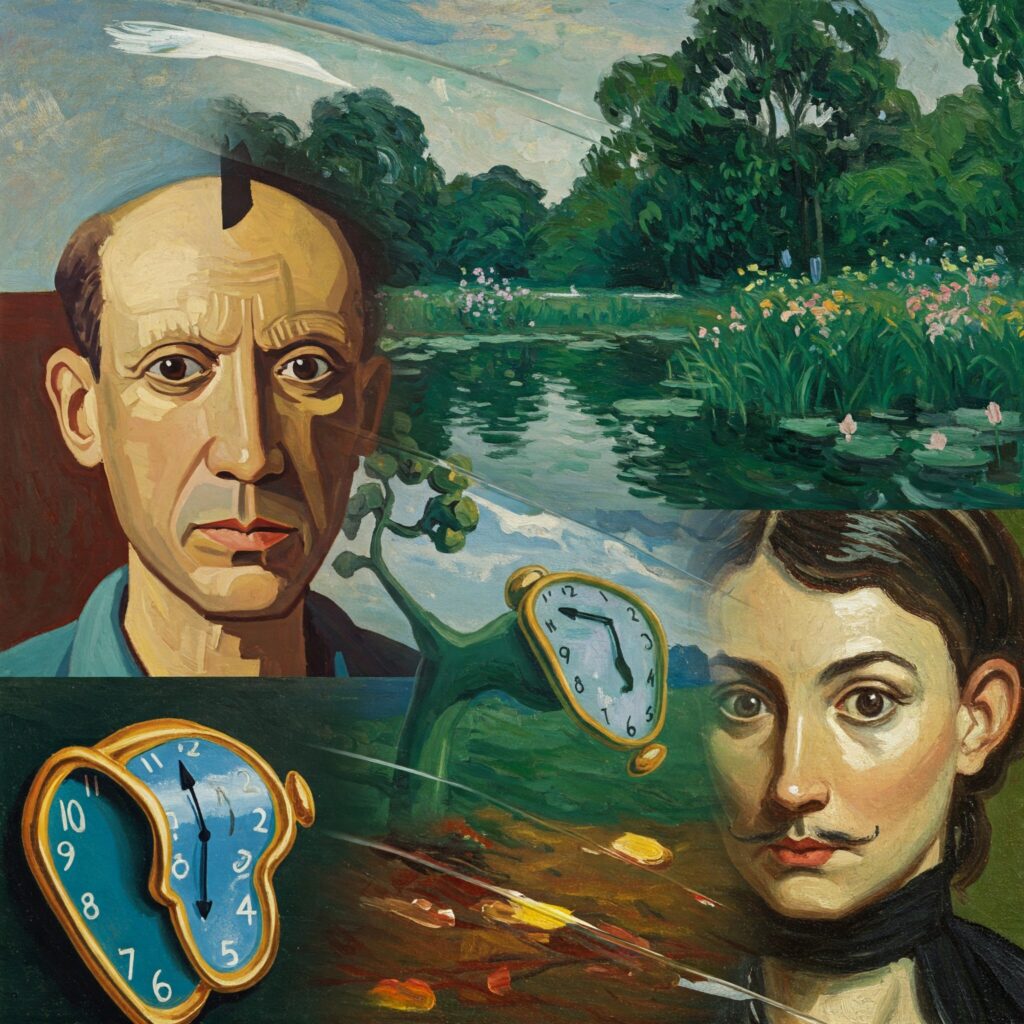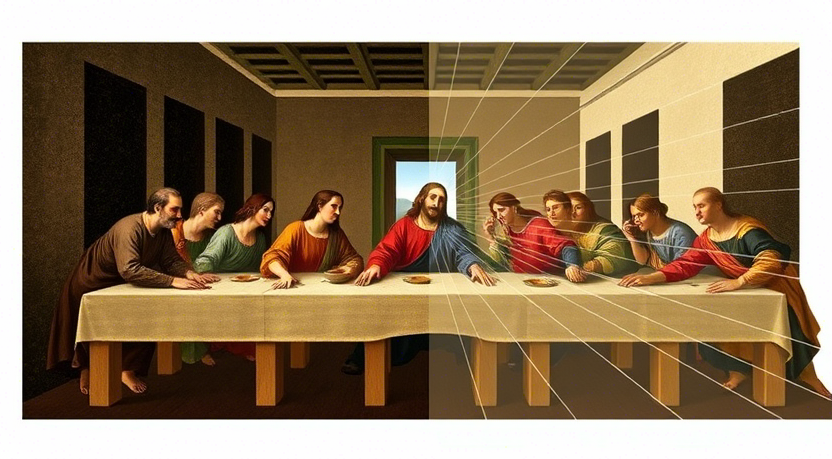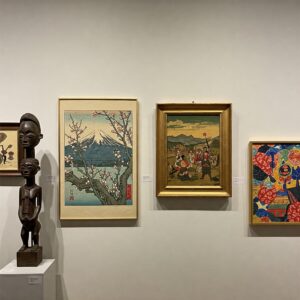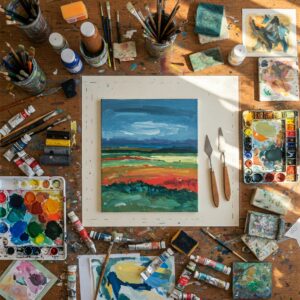Art has been a fundamental expression of human creativity since the dawn of civilization, transcending cultural boundaries and communicating emotions, ideas, and experiences that words alone cannot capture. Fine art embodies the highest form of artistic creativity, incorporating a wide range of mediums, techniques, and styles that showcase human imagination and technical skill.
Key Points Summary
- Fine art is a diverse and dynamic form of creative expression.
- Multiple mediums include painting, sculpture, photography, and mixed media.
- Art collecting can be both a passion and a potential investment.
- Understanding art requires an appreciation of technique, context, and emotional resonance.
- Technological advances are transforming how we create, view, and collect art.
Major Art Movements and Characteristics
Throughout history, various art movements have emerged in response to cultural, technological, and philosophical shifts. These movements reflect evolving artistic perspectives and innovations, influencing how artists express ideas and emotions.
| Art Movement | Time Period | Key Characteristics | Notable Artists |
|---|---|---|---|
| Renaissance | 14th-17th Century | Perspective, Realism, Humanism | Leonardo da Vinci, Michelangelo |
| Impressionism | Late 19th Century | Light, Color, Momentary Perception | Claude Monet, Pierre-Auguste Renoir |
| Cubism | Early 20th Century | Geometric Fragmentation | Pablo Picasso, Georges Braque |
| Surrealism | 1920-1950 | Subconscious, Dream-like Imagery | Salvador Dalí, René Magritte |
| Abstract Expressionism | 1940-1960 | Emotional Spontaneity | Jackson Pollock, Mark Rothko |
| Contemporary Art | 1970-Present | Diverse, Technological, Global | Ai Weiwei, Banksy |
“Art is not what you see, but what you make others see.”
Edgar Degas
Art Techniques and Methods
Art techniques represent the foundational skills that transform raw materials into meaningful expressions. Each medium demands specific technical mastery. Oil painting requires an understanding of pigment composition, layering methods, and brush manipulation. Watercolor techniques involve delicate water-to-pigment ratios, paper texture considerations, and the ability to create luminous transparency.

Advanced Painting Techniques
- Impasto: Creates textured surfaces by applying thick layers of paint.
- Glazing: Involves layering thin, transparent coats to build depth and luminosity.
- Scumbling: Produces soft, atmospheric effects by dragging semi-dry paint across a surface.
Historical Context of Fine Art
The evolution of art reflects humanity’s intellectual and cultural journey, with each era building upon or reacting against the artistic conventions of its predecessors.

- Prehistoric Cave Paintings: The early need to document experiences visually, as seen in Lascaux.
- Ancient Egyptian Art: Strict stylistic conventions primarily used for religious and commemorative purposes.
- Greek and Roman Art: Emphasized idealized human forms and mythological narratives.
- The Renaissance: Revived classical ideals with innovations in perspective and naturalism.
- Modern Movements: Impressionism and Cubism broke away from traditional realism to prioritize perception and abstraction.
- Contemporary Art: Includes digital media and conceptual art, expanding the boundaries of artistic expression.
This ongoing dialogue between past and present underscores the dynamic nature of fine art.
Artist Profiles: Masters of Expression

Throughout history, certain artists have shaped and redefined artistic movements. Their work not only reflects their personal experiences and creative vision but also represents broader artistic and cultural shifts.
- Leonardo da Vinci: A Renaissance polymath who blended art, science, and philosophy.
- Frida Kahlo: Transformed personal pain into universal narratives of identity and resilience.
- Vincent van Gogh: Used passionate brushstrokes to communicate intense emotional landscapes.
Contemporary Artist Perspectives
Modern artists like Ai Weiwei use art as social commentary, challenging political structures. Digital artists like Beeple have revolutionized art through blockchain and digital platforms, expanding traditional artistic boundaries.
Understanding Art Movements

Art movements represent collective philosophical and aesthetic approaches.
- Impressionism challenged academic painting by prioritizing visual perception over historical accuracy.
- Abstract Expressionism emphasized emotional spontaneity and subconscious creativity.
Practical Advice for Art Enthusiasts
Art appreciation requires active engagement and continuous learning. Developing artistic literacy involves understanding historical contexts, technical processes, and cultural significance.
Collecting Strategies
- Research artists’ backgrounds and artistic trajectories.
- Attend gallery openings and museum exhibitions.
- Understand an artwork’s provenance and historical significance.
- Build relationships with artists and galleries.
- Consider both emotional connection and potential investment value.
Technological Innovations in Art

Digital technologies are revolutionizing artistic creation and consumption. Artificial intelligence generates novel artistic expressions, while virtual reality allows immersive art experiences. Blockchain enables new models of art ownership and authentication, increasing transparency in the art market.
Additionally, technology has made art more accessible and democratized its appreciation. Online galleries, digital exhibitions, and social media platforms provide global audiences with opportunities to engage with and collect art in ways that were previously limited to physical spaces. These advancements continue to reshape how art is created, shared, and valued in contemporary society.
Top 10 Museums for Fine Art
Here is a list of the top 10 art museums for fine art, based on their reputation, collections, and visitor popularity:
- The Louvre Museum
- Location: Paris, France
- Notable Works: Mona Lisa, Venus de Milo
- Description: One of the world’s largest and most famous museums, housing an impressive collection of art and artifacts from ancient civilizations to the 19th century.
- Vatican Museums
- Location: Vatican City, Rome, Italy
- Notable Works: Sistine Chapel ceiling by Michelangelo
- Description: Known for its extensive collection of art and artifacts from the Catholic Church, including works by Michelangelo and Raphael.
- Metropolitan Museum of Art (The Met)
- Location: New York City, USA
- Notable Works: Greek sculptures, European paintings
- Description: One of the largest art museums globally, featuring over 2 million works spanning 5,000 years of human creativity.
- British Museum
- Location: London, UK
- Notable Works: Rosetta Stone, Elgin Marbles
- Description: While not exclusively a fine art museum, it houses significant historical artifacts and artworks from around the world.
- Uffizi Gallery
- Location: Florence, Italy
- Notable Works: Botticelli’s “The Birth of Venus”
- Description: Renowned for its collection of Renaissance art, including works by Botticelli and Leonardo da Vinci.
- State Hermitage Museum
- Location: St. Petersburg, Russia
- Notable Works: Rembrandt, Rubens, and Picasso
- Description: One of the largest and oldest museums in the world, with a vast collection of art and cultural artifacts.
- Museo del Prado
- Location: Madrid, Spain
- Notable Works: Goya, Velázquez, El Greco
- Description: Known for its extensive collection of European art, particularly Spanish masterpieces.
- National Gallery of Art
- Location: Washington, D.C., USA
- Notable Works: da Vinci’s “Ginevra de’ Benci”
- Description: Features a comprehensive collection of Western European and American art.
- National Gallery
- Location: London, UK
- Notable Works: Van Gogh’s “Sunflowers”
- Description: Houses a significant collection of Western European art, including works by artists like Leonardo da Vinci and Vincent van Gogh.
- Museum of Modern Art (MoMA)
- Location: New York City, USA
- Notable Works: Works by Picasso, Warhol, and Pollock
- Description: A leading institution in modern and contemporary art, known for its influential exhibitions.
These museums are not only renowned for their collections but also for their architectural beauty and historical significance.
Conclusion to Fine Art Guide
Fine art remains a profound method of human communication, offering insights into our collective and individual experiences. By understanding its rich, complex history and dynamic contemporary landscape, we can appreciate art as a powerful form of human expression.



